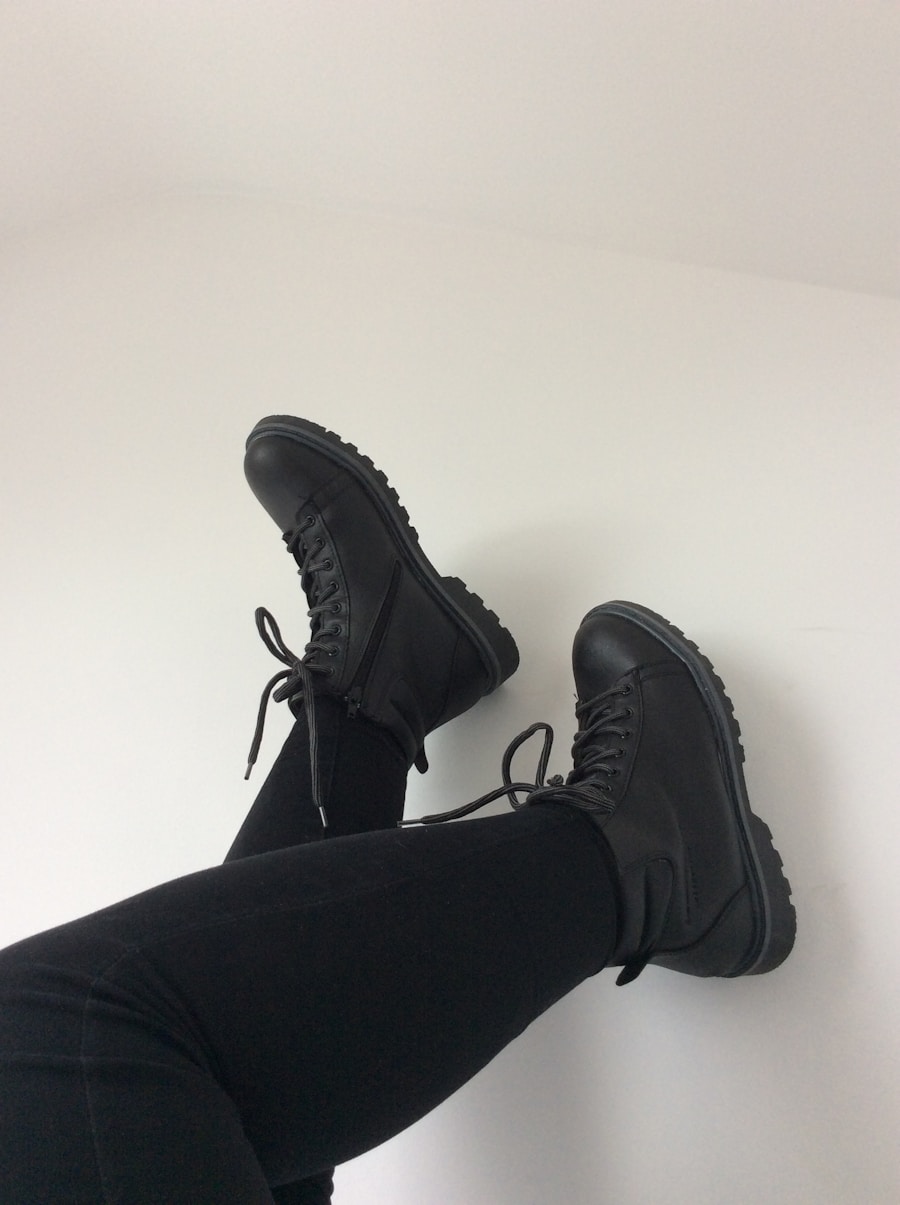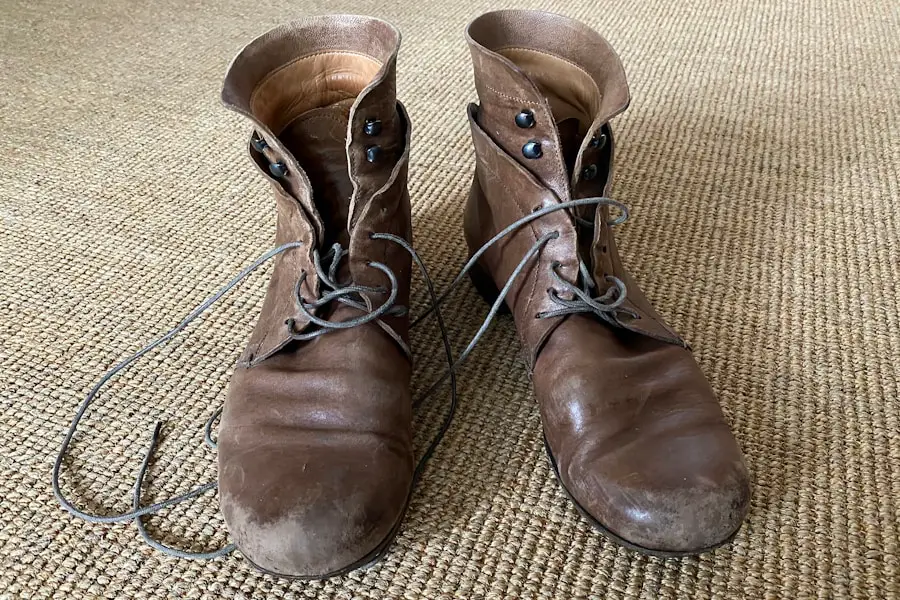Properly fitting hiking boots are crucial for any outdoor enthusiast, as they serve as the foundation for a successful and enjoyable hiking experience. The right fit can significantly impact comfort, stability, and overall performance on the trail. When boots fit well, they provide the necessary support to the foot and ankle, reducing the risk of blisters, calluses, and other foot ailments that can arise from prolonged wear.
A snug fit around the heel and midfoot, combined with adequate room in the toe box, allows for natural foot movement while maintaining control over uneven terrain. Moreover, hiking often involves traversing various landscapes, from rocky paths to muddy trails. A well-fitted boot enhances traction and stability, which is essential for preventing slips and falls.
The right size ensures that the foot is securely held in place, allowing for better balance and agility. Conversely, ill-fitting boots can lead to fatigue and discomfort, detracting from the enjoyment of nature and potentially leading to injury. Therefore, investing time in finding the right size and fit is not just a matter of comfort; it is a critical aspect of ensuring safety and performance during outdoor adventures.
Key Takeaways
- Properly fitting hiking boots are crucial for comfort, support, and preventing injuries while hiking.
- Wearing hiking boots that are a size bigger can provide extra room for thicker socks and reduce the risk of blisters and hot spots.
- However, wearing hiking boots that are too big can lead to instability, discomfort, and an increased risk of injury.
- When choosing the right size hiking boots, consider factors such as foot shape, intended use, and personal preferences for fit.
- To ensure a proper fit for hiking boots, try them on with the socks you plan to wear, walk around in them, and pay attention to any pressure points or slipping.
Potential Benefits of Wearing Hiking Boots That Are a Size Bigger
Wearing hiking boots that are a size bigger than your usual size can offer several advantages, particularly for those who engage in long-distance hikes or multi-day treks. One of the primary benefits is increased comfort during extended periods of wear. A slightly larger boot can provide extra room for the toes to move, which is especially beneficial when descending steep trails where the feet may slide forward within the boot.
This extra space can help prevent painful conditions such as black toenails or toe bruising, which are common complaints among hikers. Additionally, a larger boot can accommodate thicker socks or orthotic insoles, which some hikers may require for added support or warmth. This flexibility can be particularly advantageous in colder climates or during winter hikes when thicker socks are necessary to keep feet warm.
Furthermore, a size-up can allow for better airflow and moisture management within the boot, reducing the likelihood of excessive sweating and subsequent blisters. For those who prioritize comfort over a snug fit, opting for a size larger can be a practical choice that enhances the overall hiking experience.
Potential Drawbacks of Wearing Hiking Boots That Are a Size Bigger

While there are benefits to wearing hiking boots that are a size larger, there are also notable drawbacks that should be considered. One significant concern is the potential for decreased stability and control. A boot that is too big may lead to excessive movement of the foot within the shoe, increasing the risk of ankle sprains or falls on uneven terrain.
This lack of support can be particularly problematic when navigating rocky paths or steep inclines where precise foot placement is essential. Moreover, larger boots can create friction points that lead to blisters and hot spots. If the boot does not fit snugly around the heel and midfoot, the foot may slide forward or backward with each step, causing irritation against the boot’s interior.
This movement can be exacerbated during long hikes when fatigue sets in, making it even more likely for blisters to develop. Additionally, wearing boots that are too large can lead to an overall lack of confidence in one’s footing, which can detract from the enjoyment of the hike and increase anxiety about potential slips or falls. Source
Considerations for Choosing the Right Size Hiking Boots
| Consideration | Importance |
|---|---|
| Proper Fit | Very Important |
| Toe Room | Important |
| Ankle Support | Important |
| Arch Support | Important |
| Waterproofing | Depends on Climate |
When selecting the right size hiking boots, several factors must be taken into account to ensure an optimal fit. First and foremost is understanding your foot’s unique shape and dimensions. Feet can vary significantly in width and arch height, so it is essential to measure both length and width accurately.
Many outdoor retailers offer foot measurement services that can help determine your exact size and width classification, which is crucial for finding a boot that fits well. Another important consideration is the type of hiking you plan to do. Different hiking styles may require different boot characteristics; for instance, lightweight boots may be more suitable for day hikes on well-maintained trails, while heavier boots with more support may be necessary for backpacking or rugged terrain.
Additionally, consider the type of socks you will wear during hikes. If you prefer thicker socks for added warmth or cushioning, it may be wise to factor this into your sizing decision. Ultimately, understanding your specific needs and preferences will guide you toward selecting the right size hiking boots.
Tips for Ensuring a Proper Fit for Hiking Boots
To ensure a proper fit for hiking boots, it is advisable to try them on at the end of the day when your feet are slightly swollen from daily activities. This timing allows you to gauge how the boots will feel during extended wear on the trail. When trying on boots, wear the same type of socks you plan to use while hiking to get an accurate sense of fit.
Pay attention to how your toes feel in the toe box; there should be enough space to wiggle them without feeling cramped. Another effective method for checking fit is to perform a heel lift test. While standing up in the boots, try lifting your heel off the ground slightly; if your heel lifts significantly out of the boot, it may indicate that the size is too large or that you need a different style that better accommodates your foot shape.
Additionally, walk around in the boots on various surfaces within the store to assess comfort and support. Listen to your body; if something feels off during this trial period, it’s worth exploring other options before making a purchase.
How to Determine if Hiking Boots Should Be a Size Bigger

Determining whether hiking boots should be a size bigger involves several key indicators that can help guide your decision-making process. One primary sign is discomfort during fitting; if you experience pinching or pressure points in your usual size but find relief in a larger size, it may be worth considering an upgrade. Additionally, if you plan on using thicker socks or custom insoles for added support, opting for a size larger could provide the necessary space without compromising comfort.
Another factor to consider is how your feet react during movement. If you notice that your toes frequently hit the front of the boot while walking downhill or if you feel excessive movement within the boot when navigating uneven terrain, these could be signs that a larger size would be beneficial. It’s also helpful to consult with experienced hikers or professionals at outdoor gear shops who can provide insights based on their expertise and knowledge of various brands and models.
Expert Opinions on Sizing for Hiking Boots
Experts in outdoor gear and footwear often emphasize the importance of proper sizing when it comes to hiking boots. Many recommend that hikers prioritize comfort over brand loyalty or aesthetics; after all, even the most stylish boot will not serve its purpose if it causes pain or discomfort on the trail. Footwear specialists frequently advise trying on multiple brands and styles since sizing can vary significantly between manufacturers.
They suggest that hikers should not hesitate to explore different options until they find a pair that feels just right. Additionally, podiatrists often weigh in on footwear choices for outdoor activities. They highlight that proper arch support and cushioning are essential components of a well-fitting hiking boot.
Many experts advocate for trying boots with removable insoles so that hikers can customize their fit with orthotics if needed. Ultimately, expert opinions converge on one key point: investing time in finding the right fit will pay dividends in terms of comfort and performance during hikes.
Making the Right Decision for Your Hiking Boots
When it comes to selecting hiking boots, making an informed decision about sizing is paramount for ensuring an enjoyable outdoor experience. The balance between comfort and support must be carefully navigated; while some may benefit from opting for a size larger due to specific needs or preferences, others may find that sticking with their true size provides optimal performance on the trail. By considering factors such as foot shape, intended use, and personal comfort levels, hikers can make choices that enhance their adventures in nature.
Ultimately, whether choosing standard sizing or opting for a larger fit, prioritizing proper fit will lead to more enjoyable hikes free from discomfort or injury. Taking time to try on various options and consulting with experts will empower hikers to make choices that align with their unique needs and preferences. In doing so, they will set themselves up for success as they explore new trails and embrace the beauty of the great outdoors.
If you’re looking for the perfect gift for the adventurous woman in your life, you may want to check out this article on the best travel gifts for her. And if she’s an avid hiker, you may also want to consider whether her hiking boots should be a size bigger for added comfort and support on the trails. For more travel tips and advice, be sure to visit taketravelinfo.com. And don’t forget to review their privacy policy for more information on how your data is protected.
FAQs
Why should hiking boots be a size bigger?
Hiking boots should be a size bigger to allow room for your feet to swell during long hikes and to accommodate thicker socks for added comfort and warmth.
How much bigger should hiking boots be?
Hiking boots should typically be about a half size to a full size bigger than your regular shoe size to ensure a comfortable fit.
What are the benefits of wearing hiking boots that are a size bigger?
Wearing hiking boots that are a size bigger can prevent blisters, hot spots, and discomfort caused by tight-fitting footwear. It also allows for better circulation and reduces the risk of foot injuries.
Are there any drawbacks to wearing hiking boots that are a size bigger?
Wearing hiking boots that are too big can lead to instability and discomfort, so it’s important to find the right balance between a snug fit and extra room for comfort.
How can I determine the right size for hiking boots?
It’s recommended to try on hiking boots with the socks you intend to wear while hiking and to walk around in them to ensure a proper fit. Getting professionally fitted at a specialty outdoor store is also a good option.
